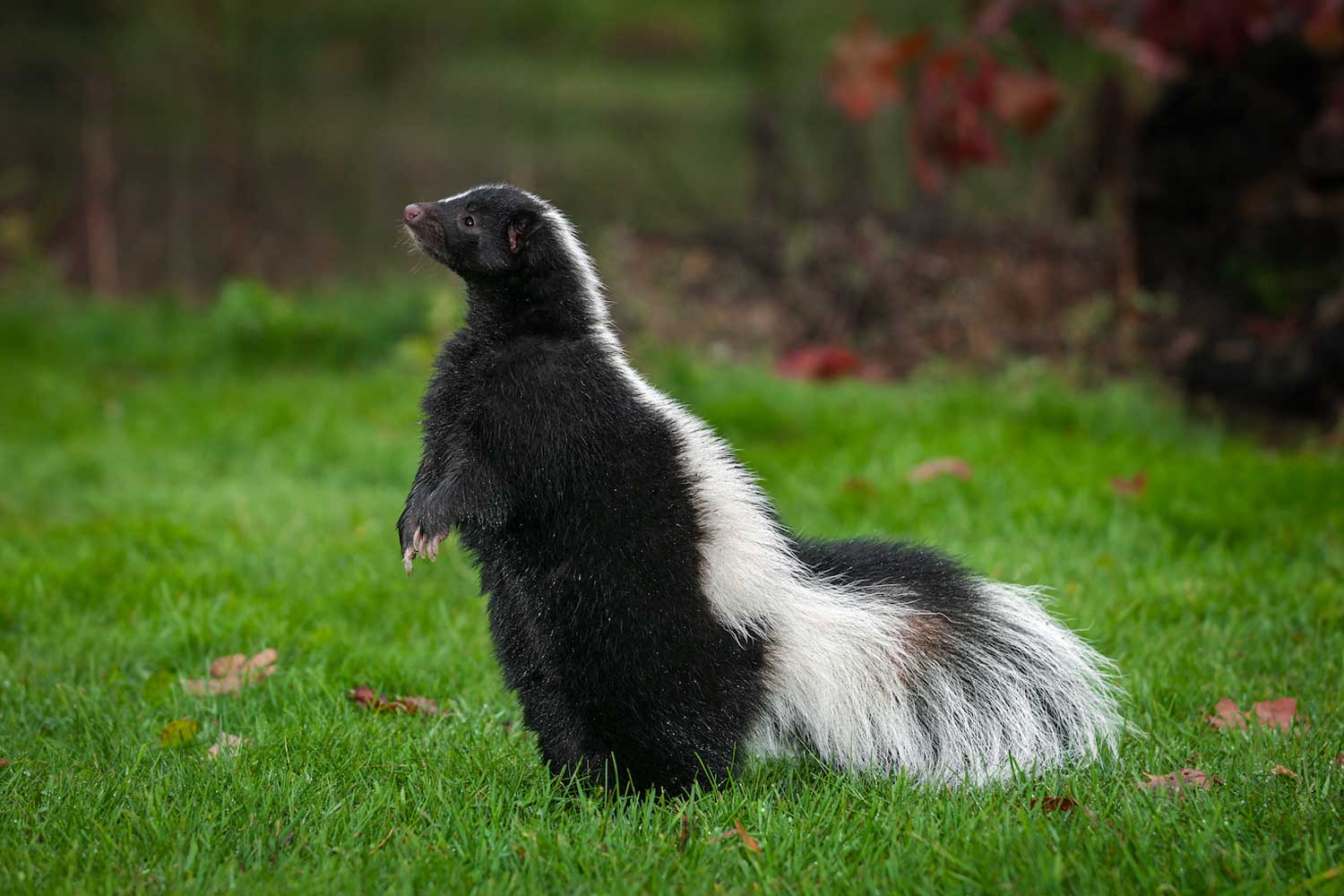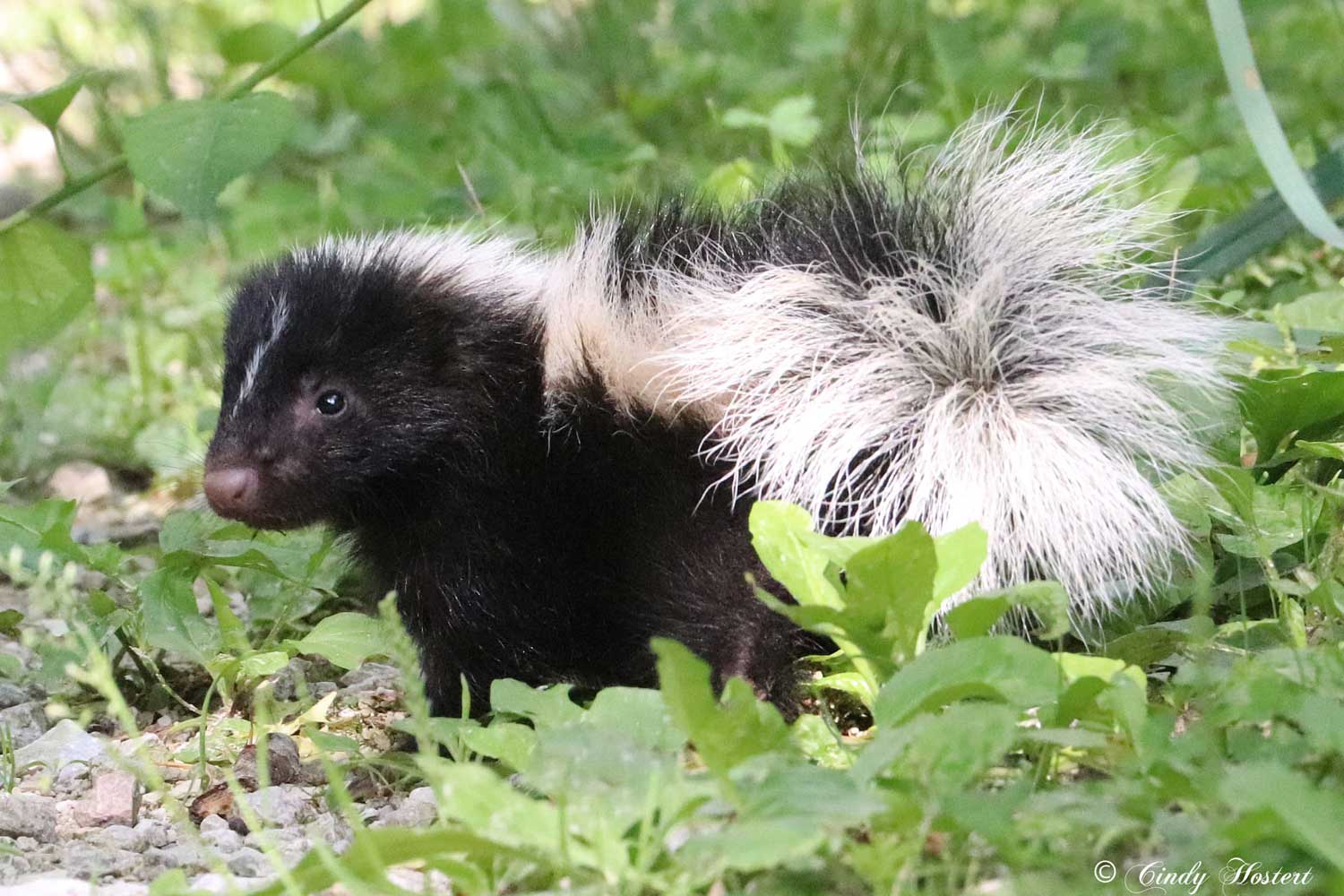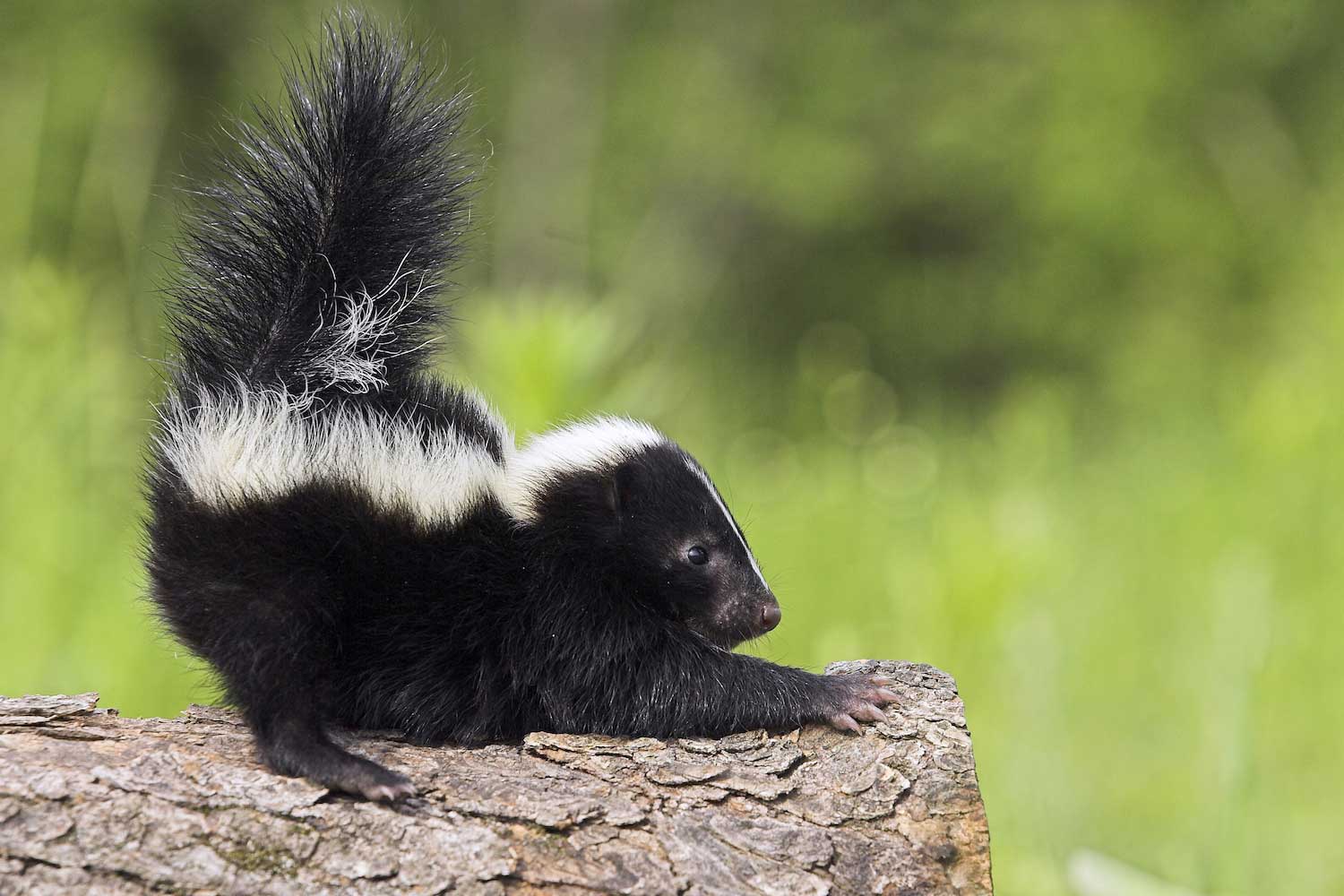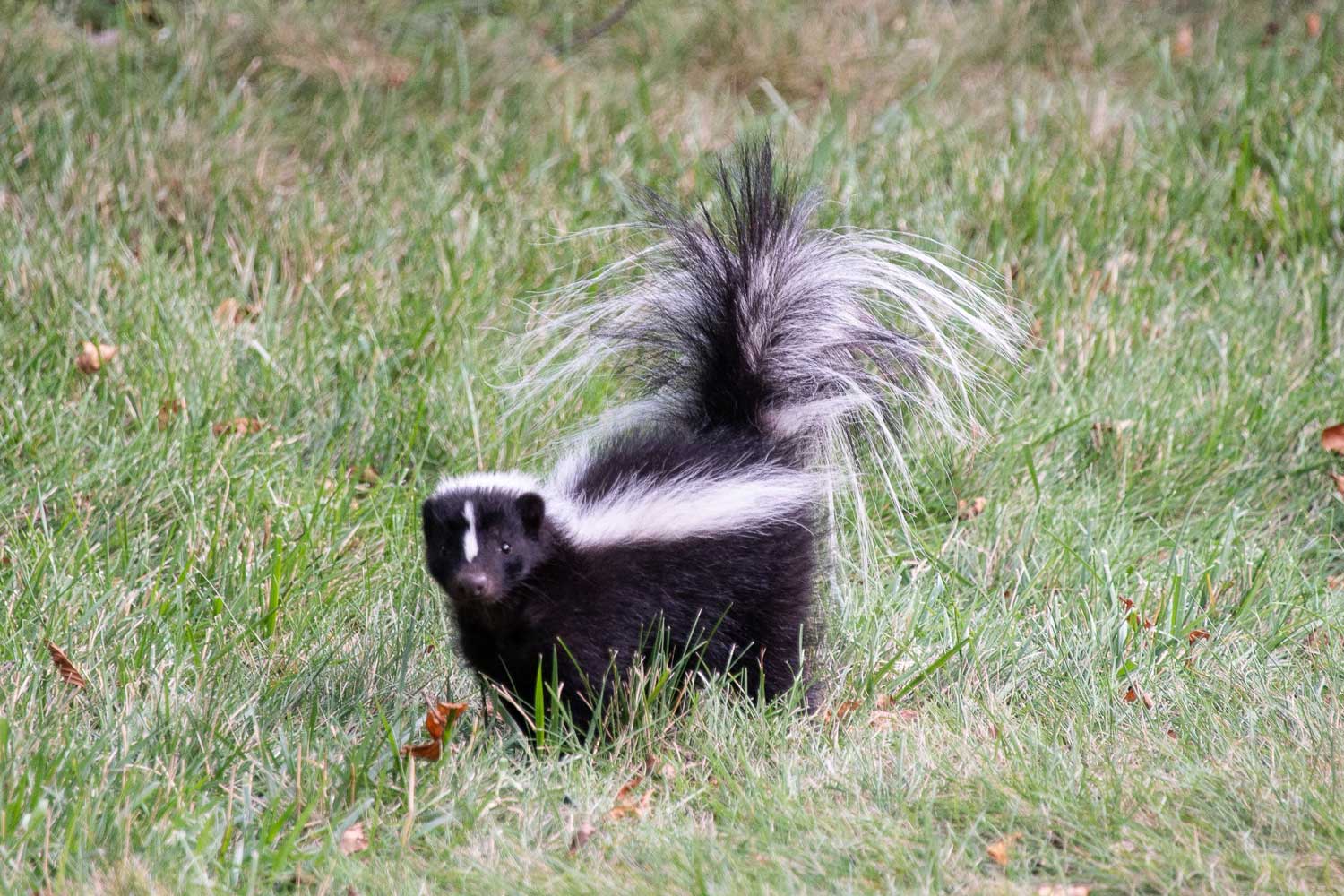Creature feature: The foul-smelling striped skunk
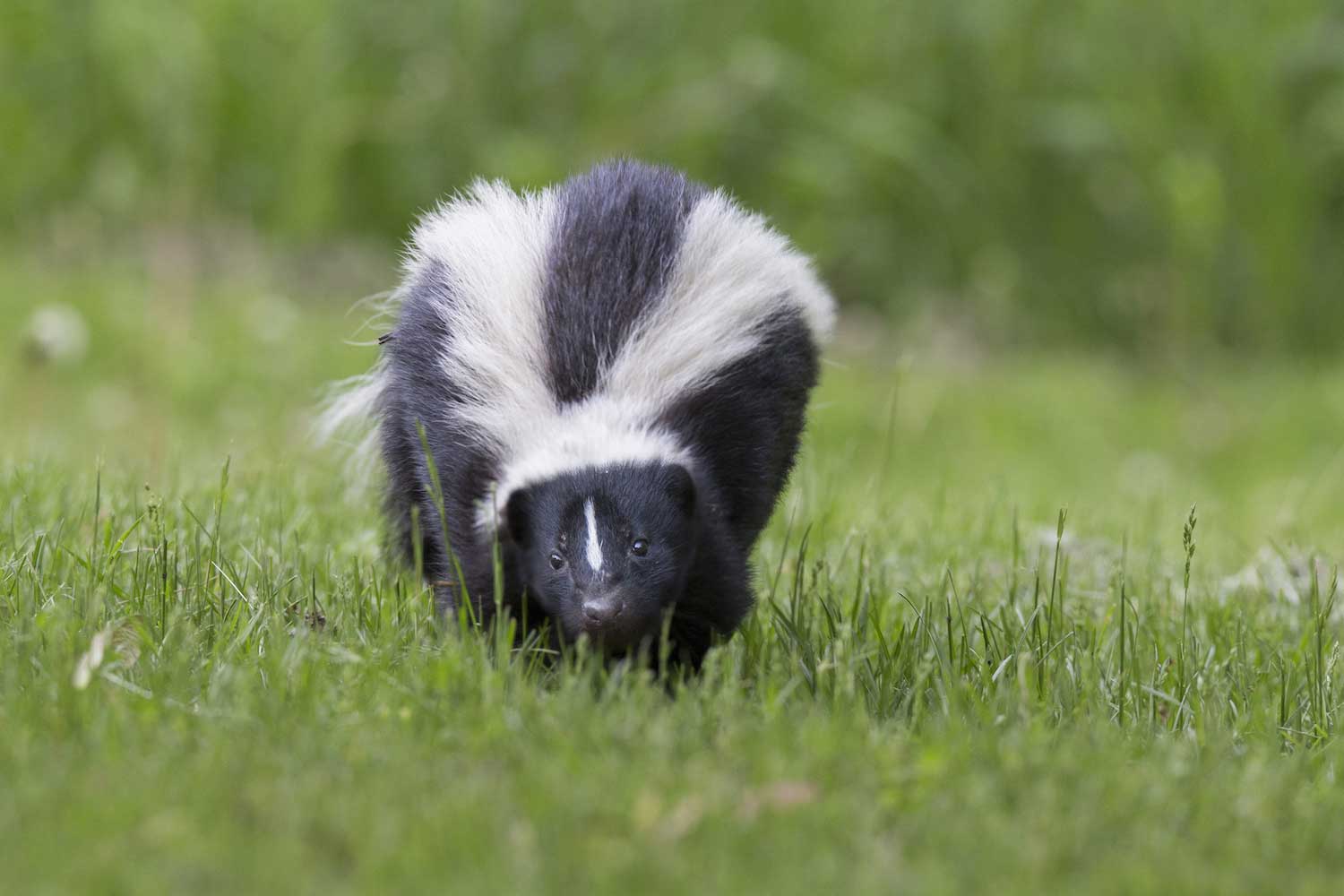
Skunks are one animal most people are very familiar with, both for their recognizable appearance and because of their foul-smelling but very effective defense mechanism.
The skunks we are familiar with are more specifically called striped skunks, and they are one of several kinds of skunks. There's also spotted skunks, hooded skunks and hog-nosed skunks. But of all the skunk species, the striped skunk is the only one native to Illinois, and they are the most abundant of all skunk species, according to Treehugger.
READ MORE IN OUR CREATURE FEATURE SERIES
Skunks are practically born with the ability to use their foul-smelling secretion as a defense mechanism. They are able to spray when they are just eight days old, about two weeks before they are even able to open their eyes, according to the Smithsonian National Zoo and Conservation Biology Institute. And their trademark white stripes are visible at birth, even before their fur grows in.
But there's more to skunks than these very well-known features. Read on to learn more.
The name game
The term skunk dates back to the 1600s and is derived from a Native Algonquian term for the animal, squunck, according to the Online Etymology Dictionary. The scientific name for the striped skunk is Mephitis mephitis, which translates to "bad odor" in English, according to the North Carolina Wildlife Resources Commission.
It is thought that the city of Chicago may also be named for a Native word meaning "place of the skunk" and that it is related to a legend of a skunk being killed on the southwestern shore of Lake Michigan, where the city was settled, the wildlife resources commission reports. Some Native tribes believed the odor of the skunk protected against diseases.
Physical characteristics
With their jet-black fur and bold white stripes, there's no confusing a skunk with anything else. They have two stripes, but they start as one stripe at their snout before splitting into two stripes on the back of their heads. Although the stripes are their most iconic feature, the pattern can vary from animal to animal, according to the Smithsonian National Zoo.
Skunks can vary in size depending on the time of year and where they live. They can lose about half their body weight in the winter, when food is scarce, the zoo reports. They typically weigh between 1 1/2 pounds and 13 pounds and are between 18 inches and 32 inches long. Males are usually a little bigger than females.
Where they live
Striped skunks live across almost all of North America, including most of the United States as well as parts of northern Mexico and southern Canada, according to Animal Diversity Web.
They can survive in many habitats, including forests, grasslands, agricultural lands and deserts, although they prefer open areas, the national zoo reports. In Will County, they are also common in urban and suburban areas.
What they eat
Skunks eat both plant and animal matter, but they prefer insects such as beetles, crickets and grasshoppers, according to Wildlife Illinois. They also eat small mammals, birds, animal eggs, fruits, corn and other vegetation.
They are scavengers, so they will eat what is easy to find. In residential areas, they will eat pet food stored outside and will go into garbage cans for food scraps. Because they are opportunistic eaters, their diet changes throughout the year to match what is more readily available. They mainly eat insects in the spring and summer, but in the winter they eat more mammals and other small animals because insects are scarce, according to the national zoo.
Why they matter
Skunks do not have many natural predators because many animals find their smell off-putting. One of the only animals known to regularly prey on skunks are great horned owls. However, skunks are predators of many species, and as result they help control the populations of the animals they prey on, according to the Missouri Department of Conservation. In addition, because they are scavengers, they help keep their habitat areas clean.
